The first time I saw Barnyard Grass was decades ago in a real barnyard near a drain spout. I was with forager Dick Deuerling who identified it for me. The next time I saw the plant it was nearly a different color completely. Purple. Very confusing.
Barnyard Grass, also called Cockspur Grass, is a hated weed around the world. It can mature in as little as 42 days producing some 40,000 seeds on each plant (good news for us.) It is a severe problem in rice production with one plant per square foot reducing production 25%. It can reduce corn yields 20%. While it likes damp places it is also not bothered by elevation and will grow to 5,000 feet.
A native of Asia Barnyard Grass is found not only around the world but throughout North America save for Alaska, the Northern tier of Canada and Newfoundland. And although it might be from somewhere else Native Americans knew a good thing when they saw it. The Cocopa, Paiute and Tubatulabal used it for food and stored it for winter use. The Yuma, however, really liked it. They pounded the seeds, winnowed them, ground them and made a meal and mush out of it. They also preferred to cook fish with the grain.
Botanically the grass is Echinochloa crus-galli, eh-kye-no-KLOE-uh kruss-GAL-eye. That pronunciation is close to Greek. Anglicized one also hears ek-ih-NOK-loh-uh krus GAL-ee. Echinochloa is two Greek words meaning Grass Hedgehog (porcupine.) This is because the seed head can have awns, straw like bristles sticking out of the seed head, or just one at the end, or none. Crus-galli — also without the hyphen — is dead Latin for Cock Spur, again a reference to the seed spike, see below.
There are about 20 species in the genus with great variability. One has purple stripes on its leaves. But one thing they do have in common, or don’t depending on how you want to say it, is barnyard grass does not have a ligule. It is the only common summer grass with no hairs or membranes at the collar. What does that mean?
Grasses are nearly as bad as mushrooms to sort out. They’ve an argot all their own and field books are wildly expensive often costing thousands of dollars. Usually when a blade bends away from the stem right where it bends there is a small vertical structure, like a collar or a tuft of hair. All common grasses have it except the genus Echinochloa. It’s absence is a major identifying characteristic of the genus. For example, the Fall Panicum, right, resembles Barnyard Grass but has a white legule. The Echinochloa crus-galli below has no ligule. Barnyard Grass also resembles Junglerice, Echinochloa colona, but has no purple bands on leaves.
Here is a research tip when you’re trying to figure out what grass you have in front of you. Do a google search using the botanical name you think it might be then add the name: Umberto Quattrocchi. He’s a grass expert with definitive publications, and fortunately not a common name. Usually you will get an except from from of his (rightfully) expensive books on the first page of your search. Once you go to the reference you sometimes have to page up or down a page or two because his entries tend to be detail heavy and long. But it is a way to access expert material on grasses without spending thousands.
Green Deane’s Itemized Plant Profile: Barnyard Grass
IDENTIFICATION: Echinochloa crus-galli: A summer annual to five feet. Seedlings hairless, leaf sheaths often tined red or maroon at the base, often growing outward before turning up. Stems thick, often branched at the lower nodes, may be tinged red to maroon at the base. Leaves four to 20 inches, 1/4 to 1.25 inches wide. Leaves have a distinct white mid-vein. Near the stem end the vein becomes keeled. There may be some short hairs at the leaf base. No ligule. Flowers knot-like. Seed head a terminal panicle, four to 16 inches long, green to purple, may have individual spikelets with a long terminal awn (like a thin piece of straw from a broom at the end of the seed spike.) Lower branches of flower spread farther apart than the upper branches. The head can be erect or drooping, sometimes purplish.
TIME OF YEAR: Flowers June to October, seeds in fall, germinates from late winter to early spring. In warm areas the process can be continuous throughout the year.
ENVIRONMENT: Roadside, ditches, irrigated crop fields, pastures, orchards, vineyards, margins or ponds and rice fields. Tolerates poor drainage and flooding, usually found in wetlands and wet places, rich soil, swampy ground, brackish marshes, swamps, disturbed sites, poorly drained areas et cetera. Intolerant of dense shade. Can take up to 80% of the nitrogen out of the soil.
METHOD OF PREPARATION: Winnowed seeds used as a staple grain, parched, roasted, boiled, ground into flour. Young shoots are eaten as a vegetable, raw or cooked. Roots are boiled to temper indigestion in the Philippines. Seeds can be popped like popcorn. In Japan it is used to make macaroni and dumplings. Seeds are roasted and used as a caffeine-less coffee substitute.

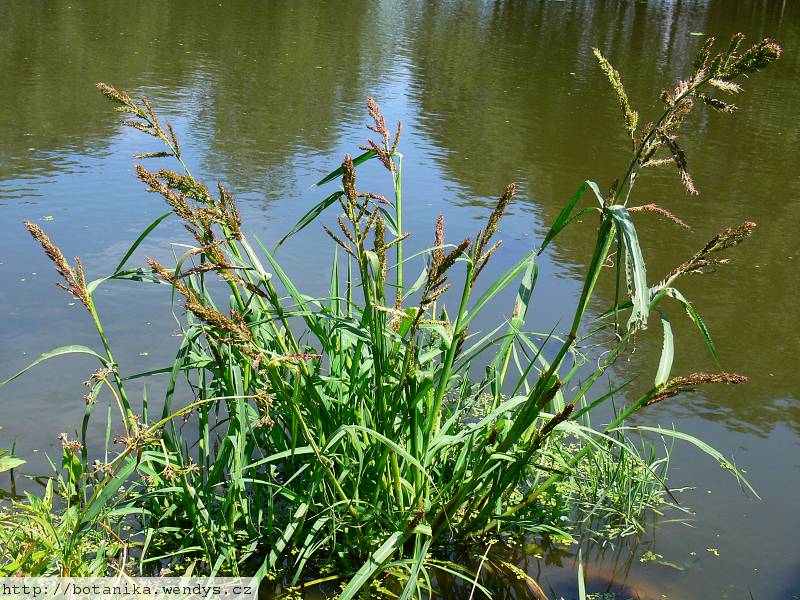
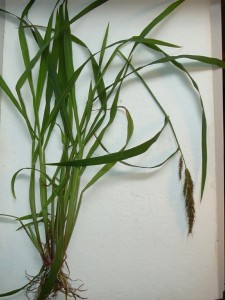
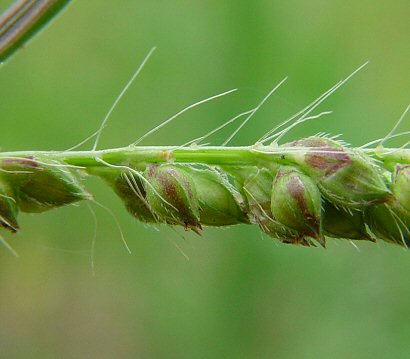
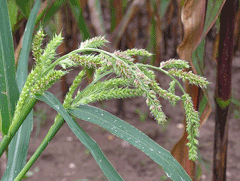
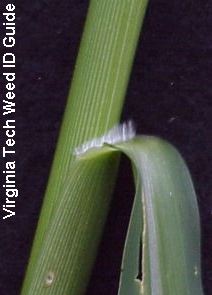
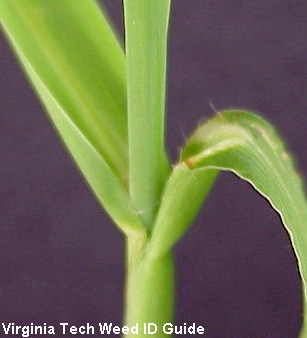

Your site looks great! Do we need to be careful about any poisonous look-alike for barnyard grass?
I would think that any seed fungus (possibly toxic) from many grass species (sometimes occurs with sandspurs) would be killed upon baking as in dough to bread but I would like to know for sure if this is the case. I can for sure see a fungus problem with raw seeds. I do tend to stay away from purple colored seeds. Thanks, Deane.
Ergot tends to not bother some species and is noticeable when it does. However, cooking does not render ergot harmless.
It’s rarely a good idea to assume that something’s that poisonous will become less so just by applying heat. Think poisonous mushrooms, aflatoxins in roasted moldy peanuts, and poisonings caused by eating rye bread made from ergotted grain. You don’t, however, have to worry much about becoming host for a fungus that lives on plants.
I’ve always assumed that most grass seeds are edible . . . IF you can clean away the chaff and what’s left behind is worth the effort. Grab a handful of seeds from the ripe head of some grasses though (warm-season prairie grasses like big bluestem or Indian grass, for example), and you won’t have much that’s edible or any easy way to get at it. It’s mostly fibrous bracts, with hairs and awns mixed in. As for poisonous compounds in grasses, do you know if there are any with poisonous seeds?
While most grass seeds are edible there are some toxic grasses, either the blades or the seeds. Sorghum has a proto cyanide in the leaves. I have read that the seeds of all native North American grasses are edible.
Deane, is the native barnyardgrass Echinochloa Muricata edible?? Is there even a difference??
That is difficult to say because not all botanists agree that E. muricata is a different species than E.crus-galli. As they are so close I wouldn’t think its an issue.
What can be used to kill barnyard grass (Echinochloa crus-galli) in a field where horses eat without harming the horses? Can rabbit and other wildlife eat the plant and survive? Is a spray weed killer available for this weed that won’t harm the ground and horses? If the area where the weed was found is huge (1000 sq. feet and growing), what can be done to remove it for the future? Thanks, 9/26/12
I know nothing about getting rid of weeds other than eating them. Also barnyard grass has been used for animal fodder.
Since WWII, we humans have been immersed, in a totally new environment: the ‘chemo-sphere’. This is a totally alien environment, created by the synthesis and release of 80,000 to 100,000+ – and counting – man-made chemicals into the natural and built environments in which we live. Only a fraction of these were ever tested for safety; any testing was almost always done by the manufacturer, none for long-term effects.
Many of these chemicals have been altered by factors like UV radiation from sunlight, or combined with other chemicals in the environment to form new compounds. No one knows what effects these combinations of unnatural chemicals will have on the planet’s bio-sphere – our life-support system – or on human health.
What is known is that within this time period, human fertility has plummeted, and cancer rates have soared. Average sperm counts in human men have dropped by >50%. One US couple in 6 has trouble conceiving. Babies, (the young of humans), are born ‘polluted’. Cancer rates are higher than 1-in-4, and rising. The question has almost become not ‘Will I get cancer?’, but ‘What kind of cancer will I get?’ And, ‘When?’
Some areas obviously have higher concentrations than others, but toxic man-made chemicals have been detected everywhere on the planet, including the polar regions. ‘Killer compost’ has certain herbicide residues, even from horse & cow manure when the animals ate hay from treated fields. Weed killers have been detected in rain.
Indoors is worse: paints, dry-cleaning fluids, mattresses & cushions, foam insulation, wrinkle-free fabric treatments, compressed wood furniture & cabinets, carpet padding, vinyl flooring…
And food: herbicide, fungicide, and pesticide residues. Chemicals from plastic wraps & containers, even plastic coated paper containers. Then there are the chemicals the FDA allows to be added to our food, usually without labling.
Why would anyone want to add to this?
If you just cannot live with this grass, there are methods less harmful than weedkillers.
Mow repeatedly and/or graze heavily when plants are young. If barn yard grass is mature & fibrous, pen livestock on it and feed hay. The trampling and manure will ‘mulch’ the grass, adding to soil fertility. Do this before plants go to seed. NOTE: It will take much longer for the trampled plant material to break down if soil life has been harmed by chemical fertilizers, herbicides, anthelmintics (worming drugs), etc. Some chemicals, including certain herbicides, are very persistent in the environment and resist breaking down.
Or, try ‘sheetmulching’; use layers on newspapers and/or cardboard, (also contain harmul chemical residues, but are better than weedkillers), leaving no spaces between. Cover w/sawdust, old hay, grass clippings, soil, whatever you have available. Water well to prevent materials from blowing away. Blocking the sunlight during the growing season will kill all vegetation, allowing you to plant what you like.
Plain white vinegar quickly breaks down leaving no harmful residues; soil pH level quickly returns to area. Saturate plants & soil at base of grasses/’weeds’. Stronger acetic acid (vinegar) is sold for weed control, but must be handled with care.
Just a few strategies that I hope will inspire people to think of something besides poisons.
don’t kill the barnyard grass, thats PERFECT fodder for them, in fact, i’d spread that seed around, as it will do much better than a lot of other grasses in that heavy traffic
Gee, you want to kill it. And I was wondering if we could malt it and make beer. You know, “When God gives lemons, make lemonade.”
Weed killers should never be used. They kill more than what they should or need to! Harmful to humans and animals !!!! Surprisingly these seeds can be popped like popcorn and the roots can be eaten like a potato !!!!Can’t figure for the life of me why people wanna kill everything that” bothers them” !!!!
The ergot previously mentioned usually occurs in damp edges of fields planted with rye. I’m not certain what other grains are affected by this, but I personally don’t know of others. This particular fungus, which turns the grain black, is the same “black fungus” that was used to produce a well-known hallucinogen made popular in the 60’s and 70’s, and used by our military in government-sponsored tests on some of our troops. I wouldn’t ever recommend trying this stuff out, as a little goes a long, long way, and there are some severe problems with flashbacks. It’s extremely powerful.
Just to add to my entry, I live in Englewood, NJ USA.